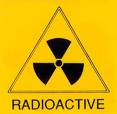
Civilian Cancer Deaths Expected to Skyrocket Following Radiological Incidents
by Public Employees for Environmental Responsibility (PEER)The White House has given final approval for dramatically raising permissible radioactive levels in drinking water and soil following “radiological incidents,” such as nuclear power-plant accidents and dirty bombs. The final version, slated for Federal Register publication as soon as today, is a win for the nuclear industry which seeks what its proponents call a “new normal” for radiation exposure among the U.S population, according Public Employees for Environmental Responsibility (PEER).
Issued by the Environmental Protection Agency, the radiation guides (called Protective Action Guides or PAGs) allow cleanup many times more lax than anything EPA has ever before accepted. These guides govern evacuations, shelter-in-place orders, food restrictions and other actions following a wide range of “radiological emergencies.” The Obama administration blocked a version of these PAGs from going into effect during its first days in office. The version given approval late last Friday is substantially similar to those proposed under Bush but duck some of the most controversial aspects:
In soil, the PAGs allow long-term public exposure to radiation in amounts as high as 2,000 millirems. This would, in effect, increase a longstanding 1 in 10,000 person cancer rate to a rate of 1 in 23 persons exposed over a 30-year period;
- In water, the PAGs punt on an exact new standard and EPA “continues to seek input on this.” But the thrust of the PAGs is to give on-site authorities much greater “flexibility” in setting aside established limits; and
- Resolves an internal fight inside EPA between nuclear versus public health specialists in favor of the former. The PAGs are the product of Gina McCarthy, the assistant administrator for air and radiation whose nomination to serve as EPA Administrator is taken up this week by the Senate.
- Despite the years-long internal fight, this is the first public official display of these guides. This takes place as Japan grapples with these same issues in the two years following its Fukushima nuclear disaster.
























 An election for President and Commander in Chief of the Military must strive to be above reproach. Our public institutions must give the public confidence that a presidential candidate has complied with the election process that is prescribed by our Constitution and laws. It is only after a presidential candidate satisfies the rules of such a process that he/she can expect members of the public, regardless of their party affiliations, to give him/her the respect that the Office of President so much deserves.
An election for President and Commander in Chief of the Military must strive to be above reproach. Our public institutions must give the public confidence that a presidential candidate has complied with the election process that is prescribed by our Constitution and laws. It is only after a presidential candidate satisfies the rules of such a process that he/she can expect members of the public, regardless of their party affiliations, to give him/her the respect that the Office of President so much deserves.

No comments:
Post a Comment
Note: Only a member of this blog may post a comment.